Ben Flatman assesses the eight stadiums used in the world’s biggest global sporting event, which kicked off on Sunday.
On Sunday billions will tune in to watch the world’s biggest sporting event kick off in Qatar.
This year’s football world cup, the first held in the Middle East, has been dogged by controversies over discrimination, migrant worker conditions and deaths and the project’s carbon footprint.
>> See also: Designing for the desert: how British architects approached the 2022 World Cup
>> See also: Would you have worked on a World Cup stadium?
But what are the eight stadiums actually like?
Here is a guide to all the venues delivered under the £220bn project.
Ahmad Bin Ali Stadium by BDP Pattern
There are a small number of specialist architecture firms working on large venues such as those for the World Cup and Olympics. It is a high-value niche, with a regular supply of work as these sporting behemoths roll around the globe from one continent to another. Pattern were founded in 2009, becoming part of BDP in 2021, and are now one of the leaders in the stadium sector.
BDP Pattern have drawn inspiration from the desert and traditional local crafts for this slick 40,000-capacity stadium. The defining feature externally is a gigantic latticework veil, that provides a single unifying identity and solar shading.
The client had originally requested a huge media screen to wrap around the outside of the building. This was dropped in favour of an approach that instead draws from Arabic “naqsh”, which are delicately carved architectural screens, often characterised by abstract repetitive patterns and symmetry.
There are five different patterns within the latticework, including a shield pattern, or Dirau, symbolising a famous battle that took place in 1893 where the Al-Thani family defeated the the Ottoman empire, and which many Qataris see as representing the start of their modern state. Other imagery includes desert roses, which were prized ornaments in Bedouin houses and tents.
According to the architects, the design also references “mirages and heat hazes, flora and fauna and traditional astronomical navigation methods”. The masterplan for the wider site, which includes a football training facility and huge public concourse, has apparently been conceived as a “caravan or journey” across a desert landscape.
Al Bayt Stadium by Dar Al-Handasah
Dar Al-Handasah were founded by a group of four professors from the American University of Beirut in 1956 as a specialised engineering firm, and have since grown into a multidisciplinary design consultancy with a presence across the Middle East, Europe and Africa.
As with the Fosters and Zaha Hadid designs, the Al Bayt Stadium draws inspiration from the local culture. However, here the refererences are less abstracted and more literal, with the entire stadium taking the form of a gigantic tent.
Bayt al sha’ar tents are traditionally used by nomadic cultures in Qatar and across the region. There are also echoes perhaps of buildings such as SOM’s 1978 Hajj Terminal at Jeddah and even high-tech “tent” structures such as the Hopkins Schlumberger Research Centre in Cambridge.
The stadium has been awarded a five-star rating for its design and construction from the Global Sustainability Assessment System (GSAS). This is a performance-based system for assessing and rating buildings and infrastructure, developed specifically for the Middle East and north Africa, and in 2016 it was endorsed as the agreed standard for the 2022 World Cup.
Al Janoub Stadium by Zaha Hadid Architects with Aecom
Seductive and immediately recognisable, the Al Janoub Stadium in Al Wakrah is perhaps the most striking of all the tournament arenas. Conceived while Zaha Hadid was still alive, and credited to Hadid and Patrik Schumacher, it is a striking reminder of her lasting impact on architecture and design. It has a capacity of 40,000, which will be reduced to 20,000 once it enters its ”legacy mode” after the World Cup.
The stadium is located in the coastal city of Al Wakrah, which led the client to request a design that responded to the seafaring culture of the immediate context. Zaha Hadid Architects (ZHA) have taken inspiration from the hull of the traditional dhow, a type of boat symbolic of Arabic mercantile and cultural influence across the Middle East and east Africa.
Acording to the practice, ”the stadium’s roof design is an abstraction of the hulls of dhows turned upside-down and huddled together to provide shade and shelter. This is expressed in the stadium’s envelope geometry, details and selected materiality, including the roof’s beam structure that echoes the interior structure of a dhow’s hull.”
There is a 378-tonne fully retractable roof and, as with the other stadiums, underseat vents provide cooling, allowing the venue to be used throughout the year.
Like Fosters, ZHA are not known for their stadium work, and detailed design and implementation has been largely overseen by Aecom. However, Al Janoub follows the prevailing pattern of contemporary stadium design in approaching the building as a standalone object in space - a potent symbol and aspirational “icon” for the World Cup and Qatar.
Al Thumama Stadium by Ibrahim M. Jaidah with Heerim
The Al Thumuma Stadium is designed by Ibrahim M. Jaidah, chief architect of Arab Engineering Bureau, an Omani design consultancy founded in 1971. As with several of the other stadiums, there is an explicit reference here to tradiitonal Arabic crafts. This time the inspiration comes from the “gahfiya”, a simple white cap worn by men throughout the region.
Ibrahim M. Jaidah said “I was extremely enthusiastic when we were awarded the design for Al Thumama Stadium. Here, the aim was to create the design that would resonate not only with Qatar but with the whole region. In our culture, the gahfiya forms an important part of every young boy’s pathway to adulthood, and this rite of passage was fundamental inspiration for the design.”
The device of the all-enveloping gahfiya gives this stadium a clear legibility and consistency. The venue is surrounded by a 50,000m2 park, including 400 trees. Once the tournament is over, 20,000 of the 40,000 seats will be removed as the stadium moves into its legacy mode.
Education City Stadium by Fenwick Iribarren with BDP Pattern
This stadium was originally designed by Spanish practice, Fenwick Iribarren. However, after the client changed the procurement route to design and build, the final design and implementation of the project went to BDP Pattern. Although the appearance of the stadium remained largely unaltered, BDP Pattern significantly reduced the size of the building.
Fenwick Iribarren worked on two other World Cup stadiums, and BDP Pattern also designed the Ahmad Bin Ali Stadium. In contrast to the Ahmad Bin Ali Stadium, which has a lighter and more porous facade treatment, the Education City Stadium is muscular and brooding. Externally it is low key and restrained compared with some of the other venues. It is certainly one of the more architecturally coherent stadiums, with clear, clean lines and a logical and unfussy design approach.
Once the World Cup is over, this stadium will be downsized from a 40,000 to 20,000 capacity, and given over to use by a range of different sports and higher education insitutions as part of its role within the wider Education City campus. The 20,000 surplus seats will be donated and repurposed to help create new sports stadiums in the developing world.
BDP Pattern say that the stadium was conceived as a ”shimmering diamond”, but this building looks more industrial chic or sci-fi than gemstone.
Khalifa International Stadium by Dar Al-Handasah with Fenwick Iribarren Architects
The Khalifa International Stadium opened in 1976 and is the venue for England’s opening match on 21 November. The original design was largely open to the elements, with little in the way of roofing or shade over the stands. Clearly local expectations of what was acceptable in terms of thermal comfort were very different to Fifa’s requirements in 2022. As elsewhere at the World Cup, mechanical cooling will be in operation during the matches.
The stadium was previosly renovated in 2005 for the 2006 Asian Games. The latest reinvention has been overseen by Dar Al-Handasah (who also designed the Al Bayt Stadium) with Fenwick Iribarren Architects, a Spanish practice with an impressive portfolio of stadiums.
Architecturally this is perhaps not one of the most ambitious designs and clearly the architects have been constrained to some extent by working with an existing structure. But there is a satisfying simplicity to the design, particualry from within the stadium, where the gently undulating roof creates a calm and coherent space.
A whole new permanent tier of seating has been built, adding another 12,000 seats and taking the stadium’s total capacity to 40,000.
Lusail Stadium by Foster + Partners
This is the centrepiece venue for the world cup competition. Located in Lusail, a rapidly growing new city that is planned to have a population of 450,000, the stadium has an 80,000 capacity and will host 10 matches, including the final.
Fosters are not particularly known for stadiums. Their most notable previous effort was the not entirely convincing Wembley rebuild, with its contrived arch and blandly generic external elevations. Wembley was designed with Populous (then HOK Sport) and the two practices have teamed up again here, but with a much happier outcome.
Lusail is a far more confident building, perhaps taking advantage of a site that is less constrained by existing context, history and infrastructure. Fosters seem to have learned a lot in the intervening time since Wembley and architecturally this is an accomplished and elegant stadium. Whereas Wembley was disparate and felt like a kit of parts, here everything appears part of a coherent whole.
It’s apparently inspired by the appearance of traditional Arabic metal bowls, but I’m not sure it really matters. The form is fluid and seductive and likely to become one of the enduring images of the competition - which is after all a significant part of its purpose.
Luke Fox, Head of Studio at Foster + Partners, said: “Our ambition was to create a striking yet simple form that reflects the building’s function, responds to the climate of Qatar and enhances the theatre of the event. The arrival experience is intuitive and immersive. Spectators enter the vessel between two tiers of seating that have been intentionally compressed to heighten the sense of drama as they emerge into the generous seating bowl flooded with natural light.”
Externally the bowl-like form is clad in gold-coloured aluminium panels that shade the internal concourses while also allowing through a certain amount of natural light. Hovering above the pitch is a 307-metre-diameter ‘spoke-wheel’ cable net roof, one of the largest of its kind in the world. The outer compression ring is connected to the central tension ring through a complex web of cables. This method creates a wide-expanse roof without the need for supporting columns.
Stadium 974 by Fenwick Iribarren Architects
Internally Stadium 974 looks like nothing out of the ordinary. But externally it is an entirely different story.
Built close to Doha’s waterfront on a reclaimed peninsula, this is the World Cup’s first ever entirely temporary stadium. Once the football is over the structure will be dismantled and seating shipped off (as with BDP Pattern’s Education City Stadium) to create new stadium progeny across less affluent parts of the world.
This is a playful and highly successful piece of massive temporary architecture. So many architects have toyed with ideas of the temporary over the decades, but rarely been able to follow through. Here Fenwick Iribarren have drawn on the seafront setting to conjure up the image of a container port, using hundreds of shipping containers, some of which contain toilets and hospitality concessions.
From the pitchside, it is a much more staid and conventional affair, but that hardly seems to matter. Although destined to disappear once the tournament is over, Stadium 974 will surely generate some of the most memorable architectural images that visiting fans and global viewers will take away from the event.




















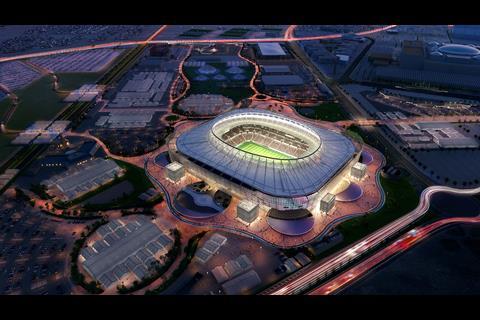
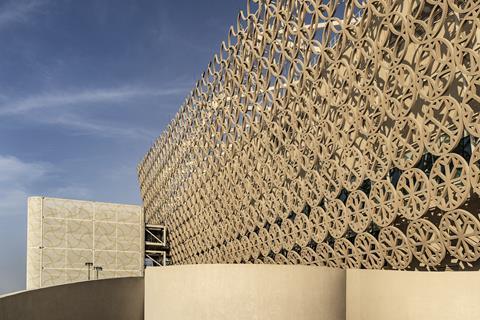
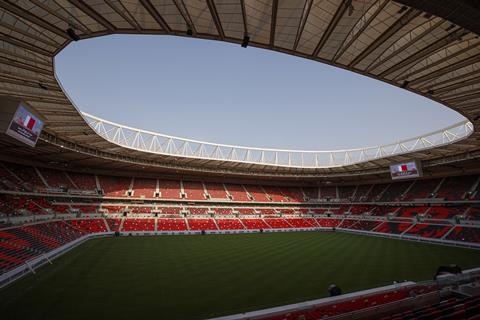
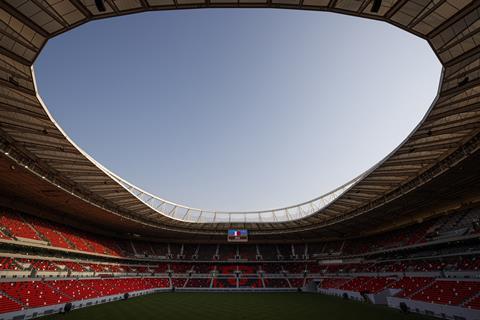
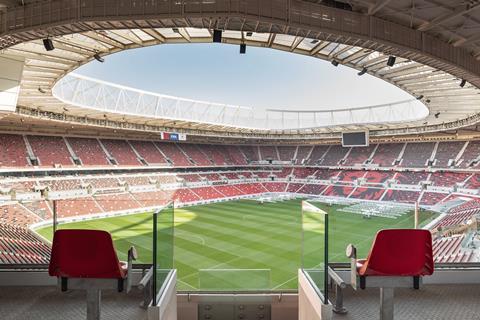
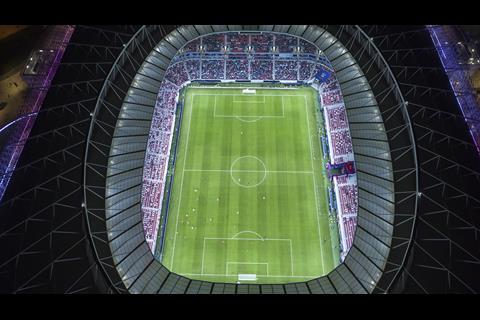
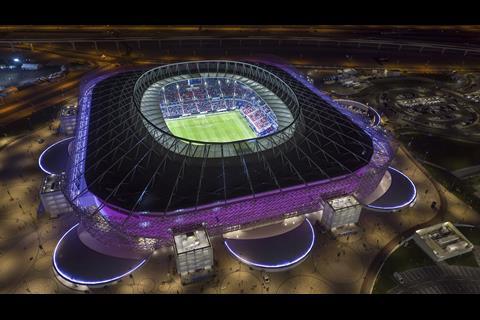
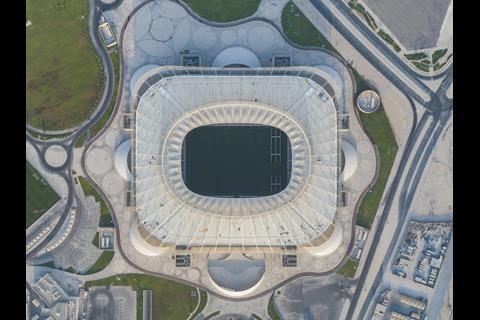
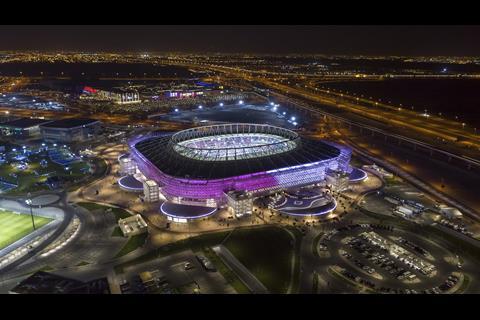
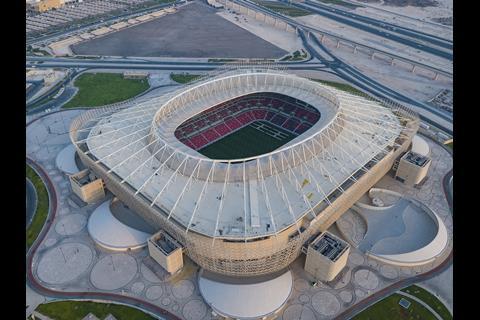
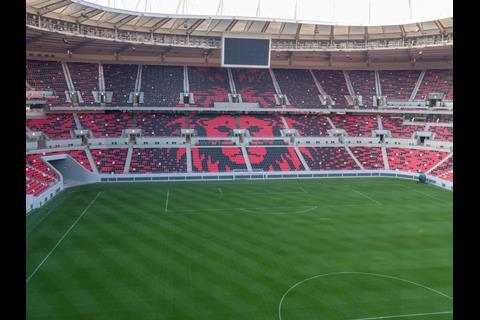
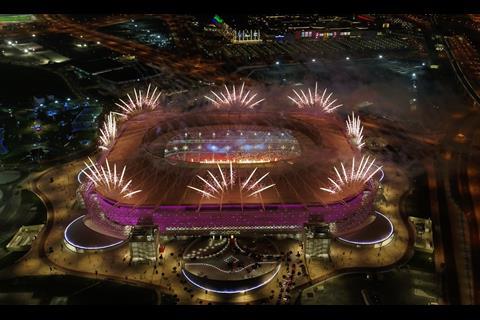
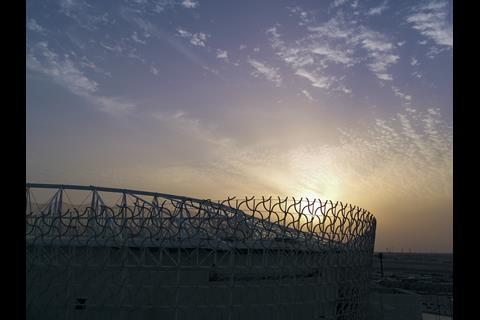
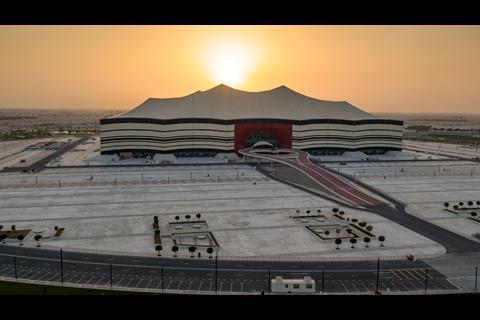
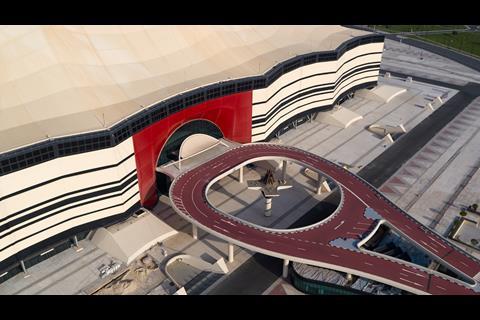
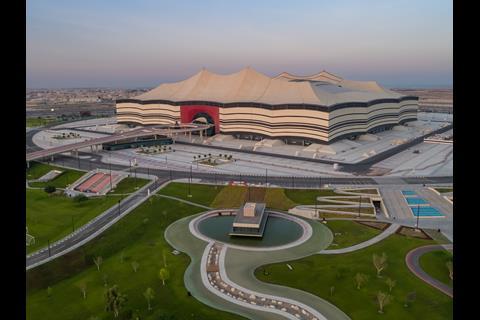
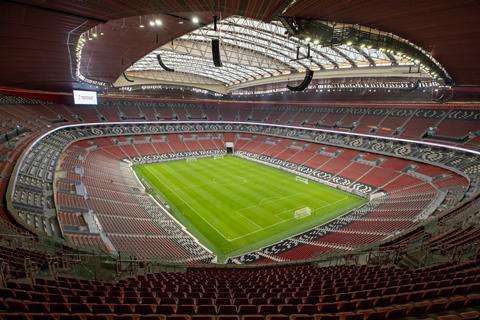
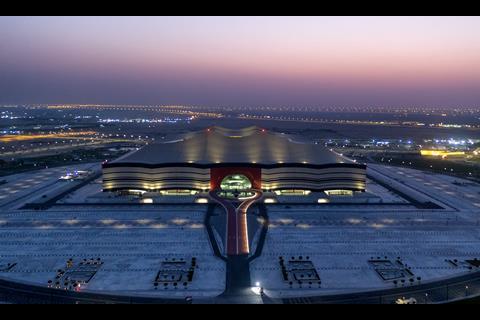
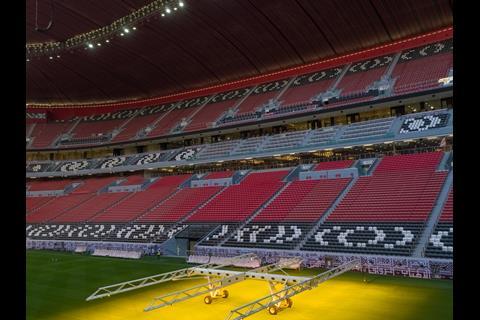

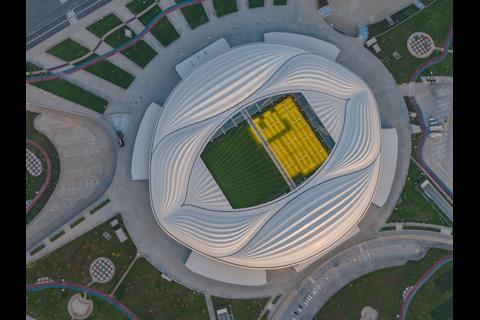
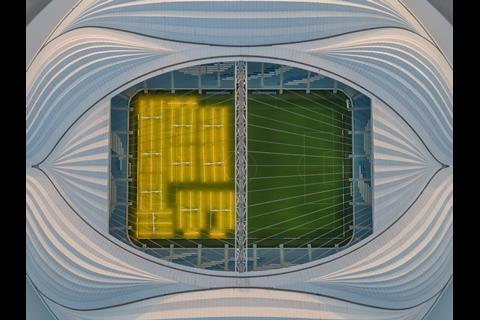
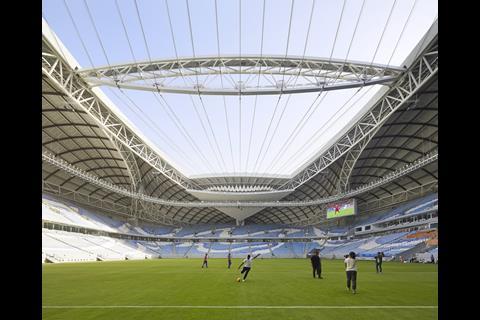
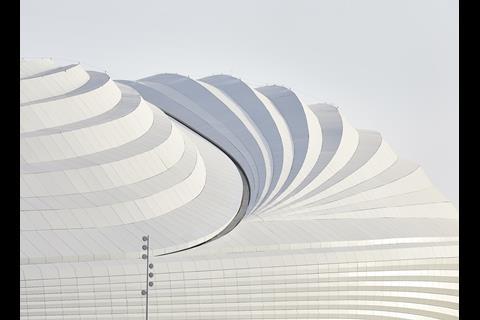
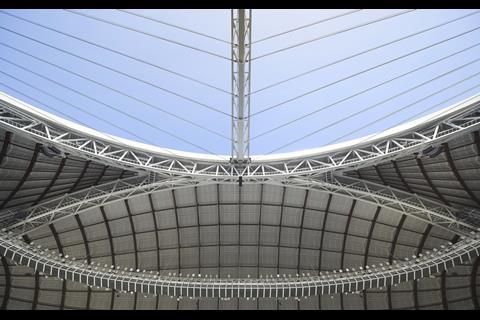
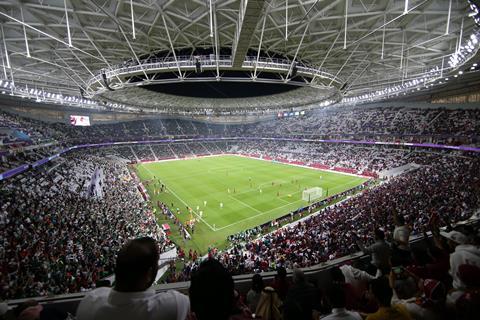
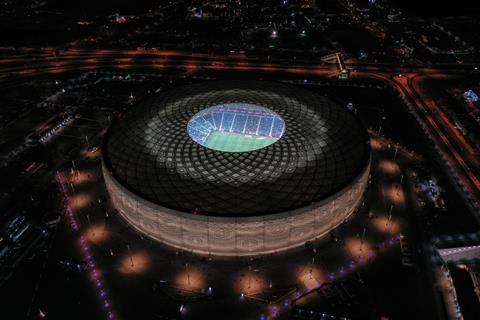
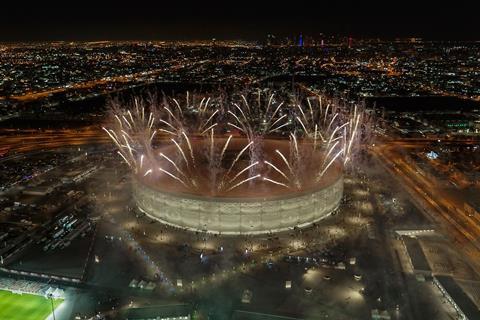
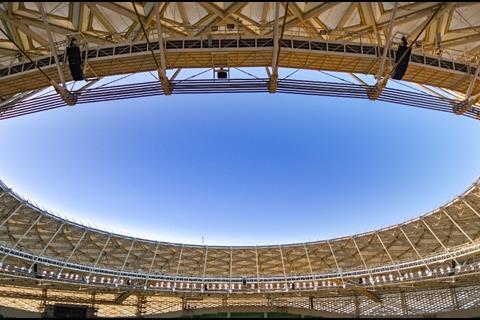
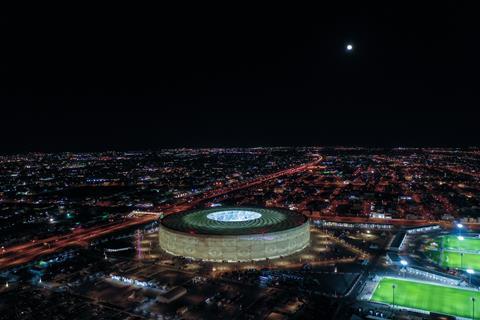
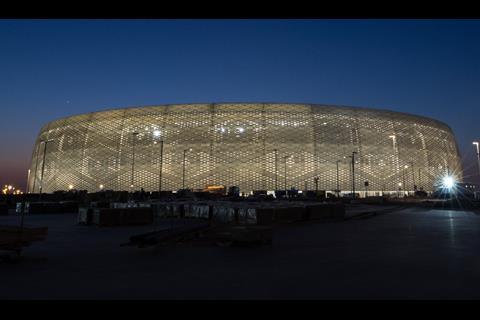
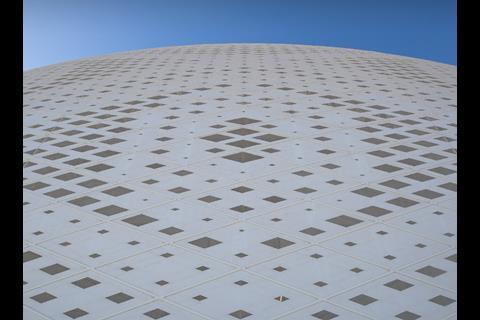
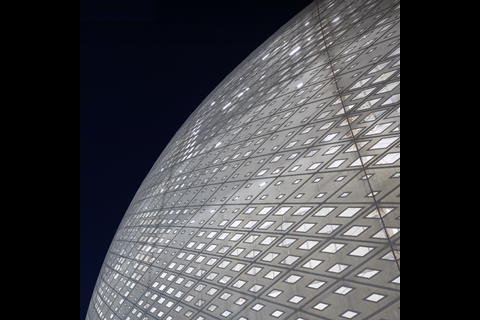
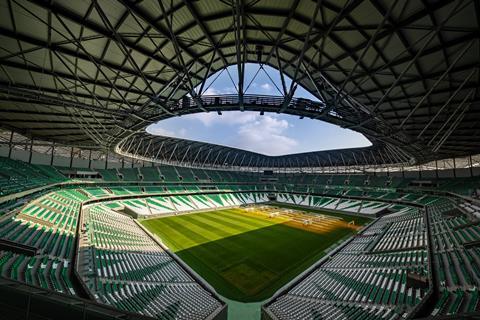
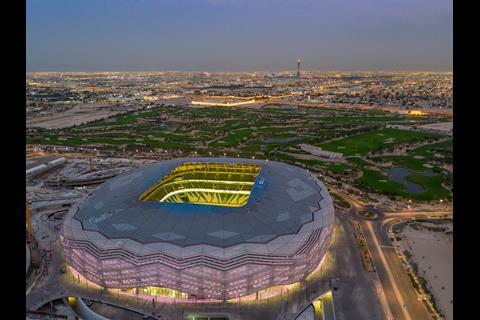
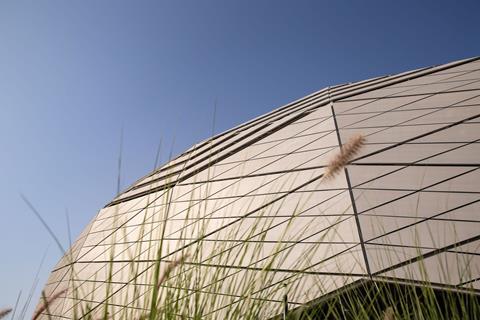
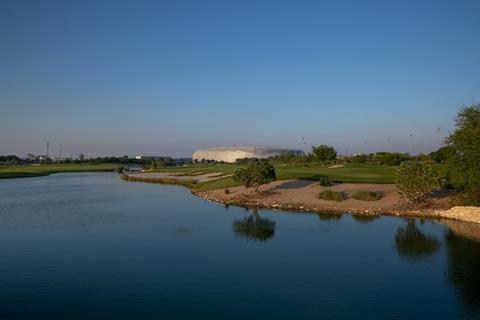
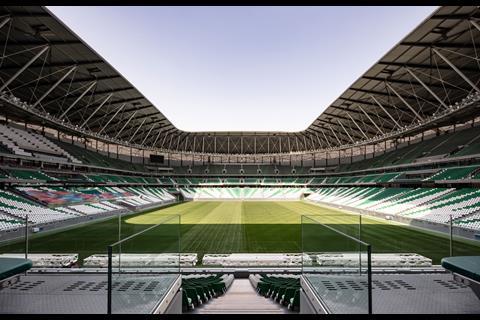
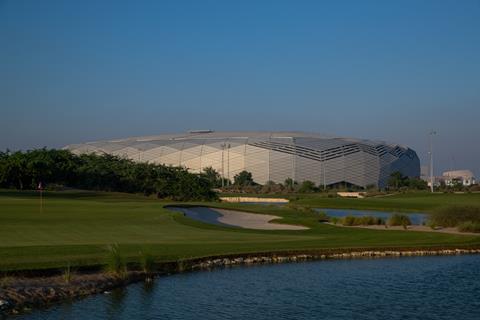
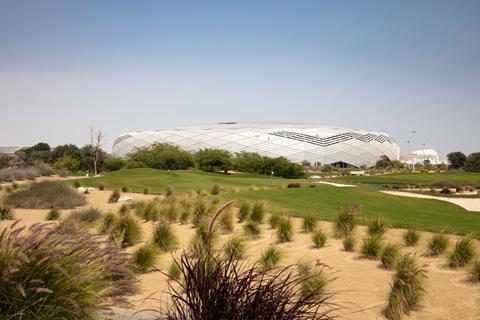

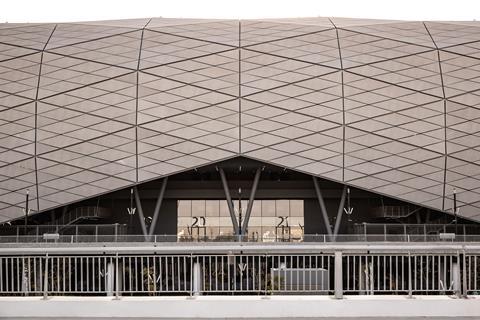
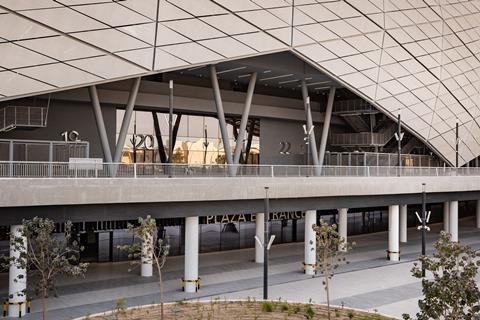
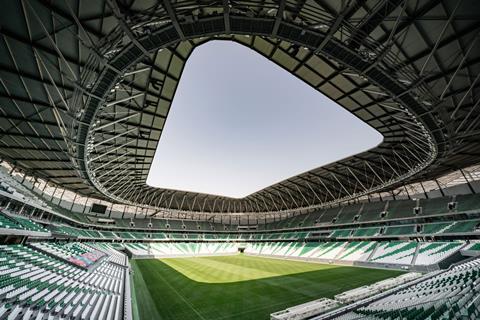
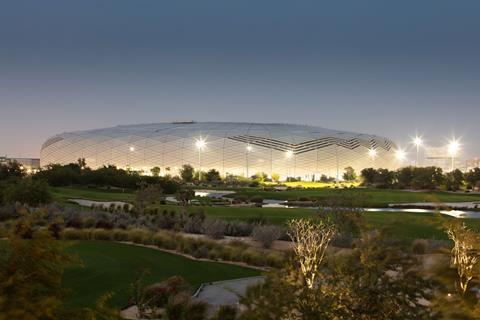

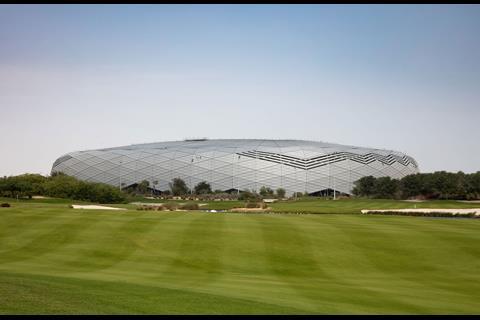
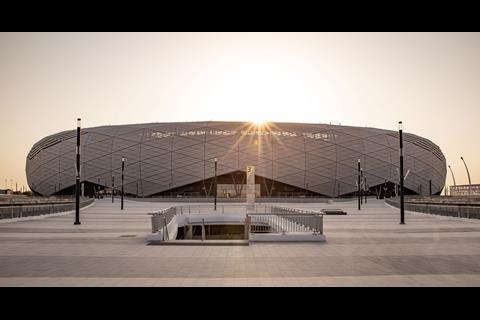
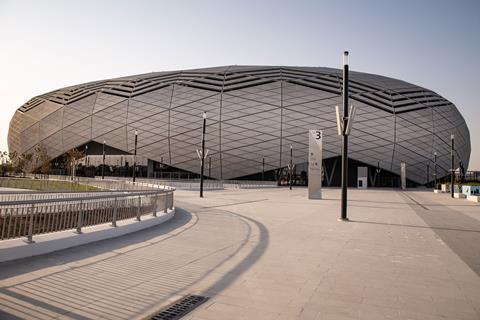
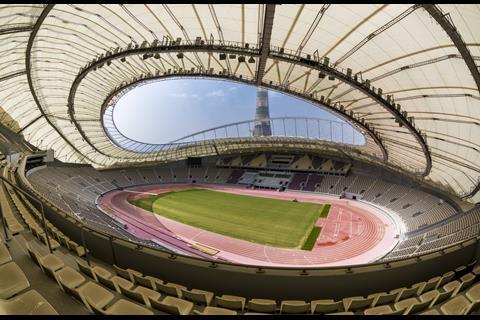
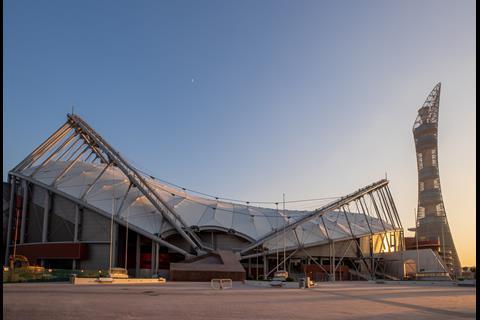
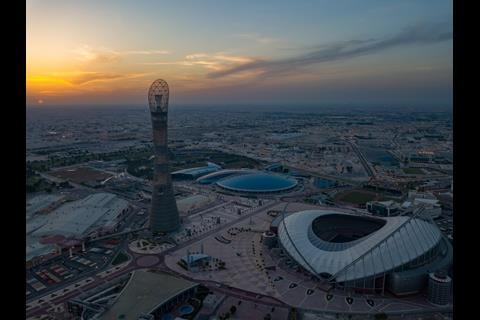
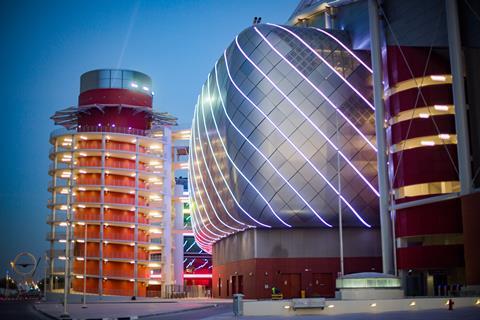

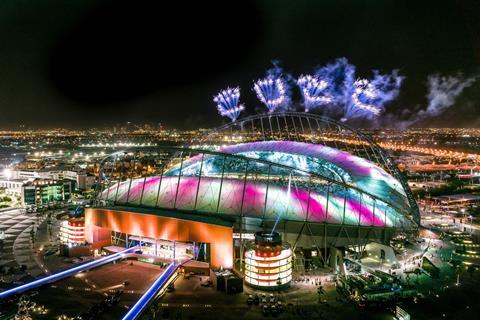
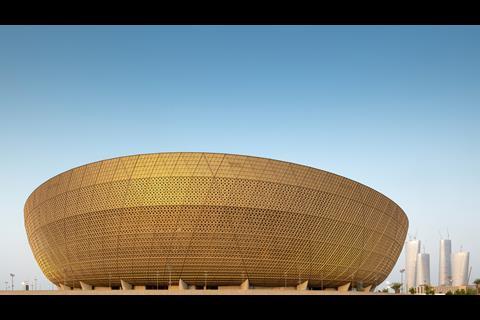
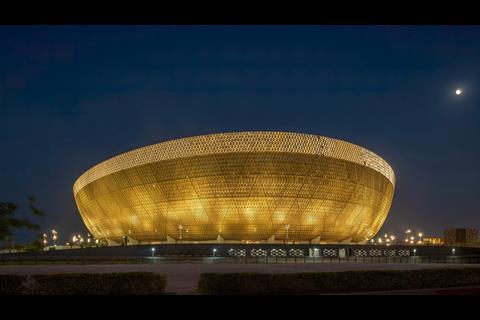
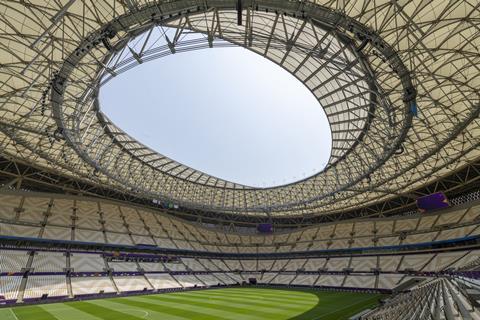
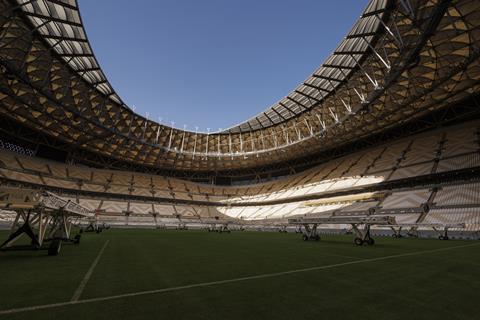

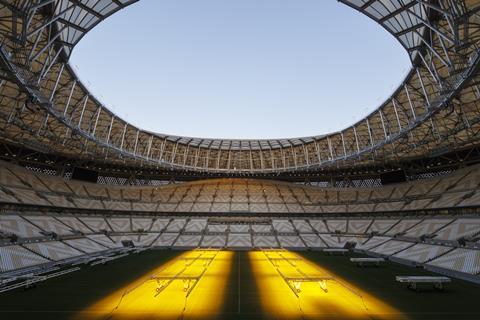
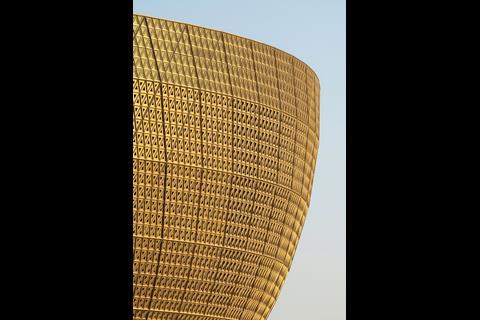

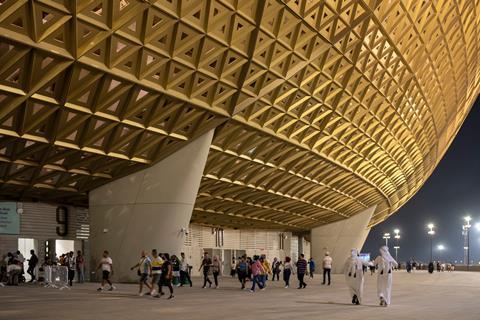
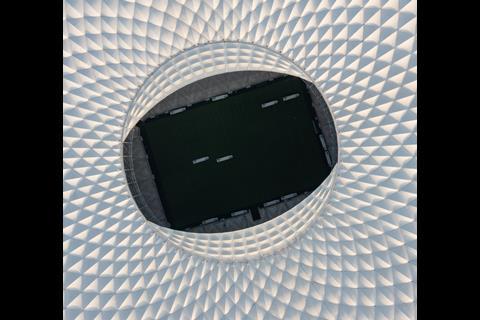
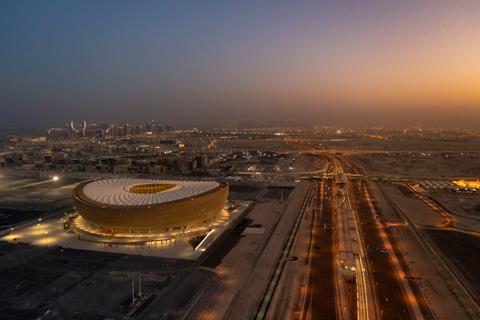
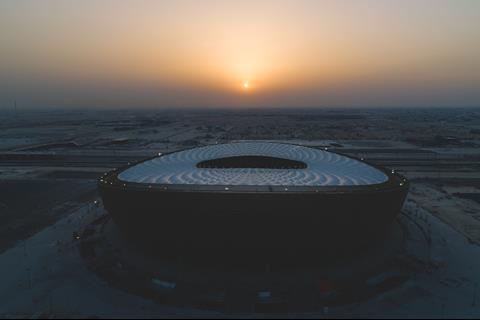
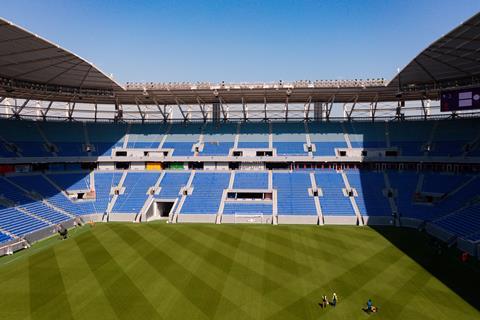
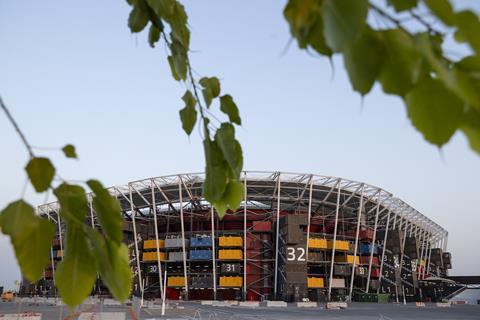
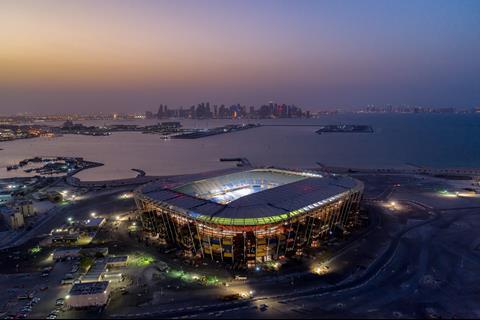
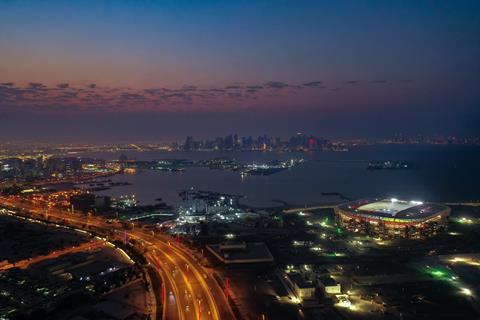
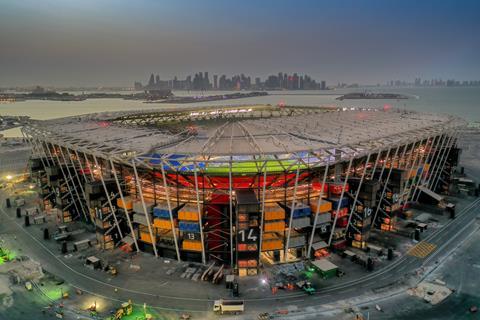






1 Readers' comment